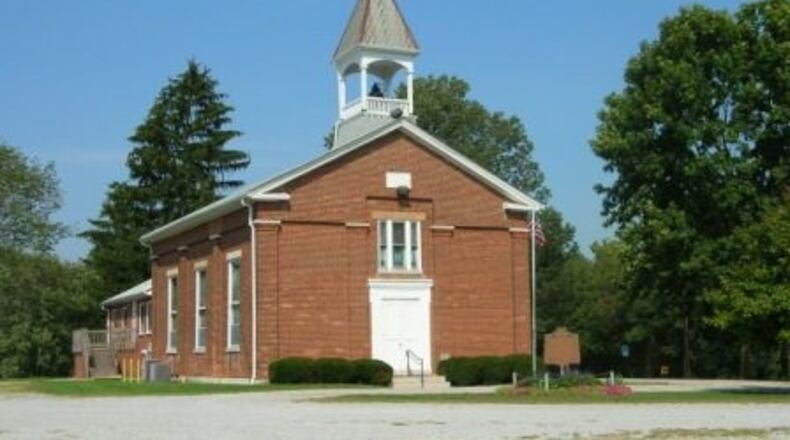Today, we feature the marker at the Union Meeting House Organized in 1807 and Union Seminary Organized in 1809, 1145 Union Road. in Xenia.
Marker location
Marker text
— Side A: On this site in 1809, pious Christians from Virginia and North Carolina erected a Methodist Church, the first in Greene County.
The church was officially organized on May 23, 1807 as the Bonner Society. Frederick Bonner, Sr. and the illustrious Rev. John Sale were the principal organizers. This Methodist Church, one of the oldest in Ohio, has been serving the area known as the Union Neighborhood uninterrupted from this site since 1809. Rev. Bennett Maxey was the first pastor.
— Side B: On this site in 1809, the first organized school in Greene County was established.
Organized by Methodists from this community, classes commenced on January 1, 1810 with a total enrollment of twenty students. A multi-purpose log building 35′ x 35′ was erected that served as a school during the week and a Methodist Church on Sundays. A log cabin 16′ x 16′ was also erected for use by teachers and their families.
Noted educator, John P. Finley, brother of the illustrious Rev. James B. Finley, was the first school master.
The Ohio Historical Markers program
Beginning in the 1950s, the program encompasses over 1,750 unique markers that tell the state’s history as written by its communities.
Reading a marker
In addition to the text describing the historic marker, in the lower right is a number. This indicates the sequence number of the sign installed in a particular county.
Example above
Marker No. 2-29. The 2 indicates that this particular marker is the 2nd marker to be erected in the county and 29 indicates that the marker is located in Greene County.
More information about markers
You can find information about all of Ohio’s historical markers at the Remarkable Ohio website.


